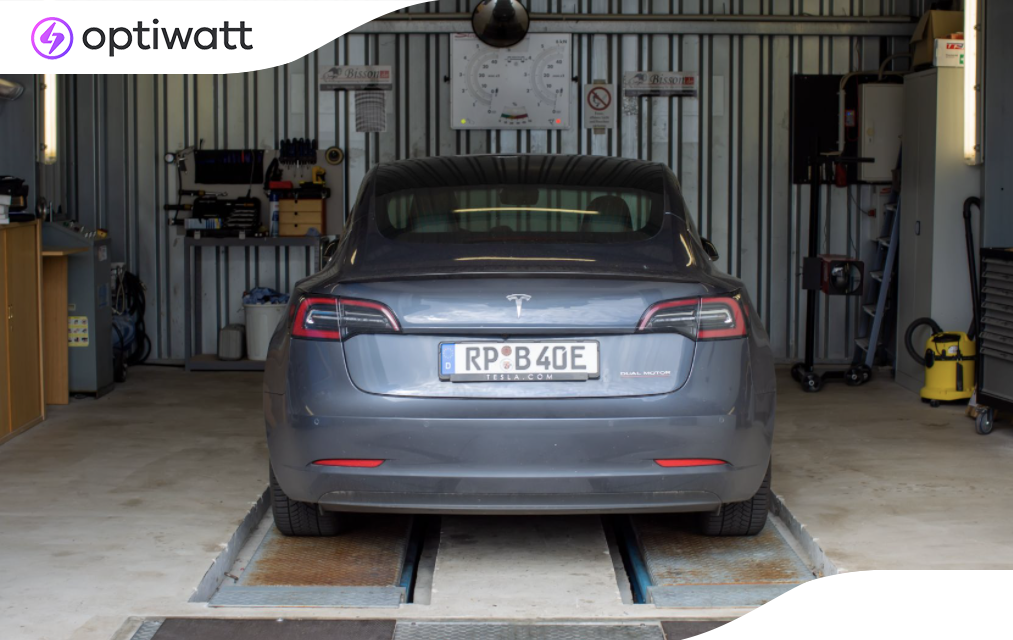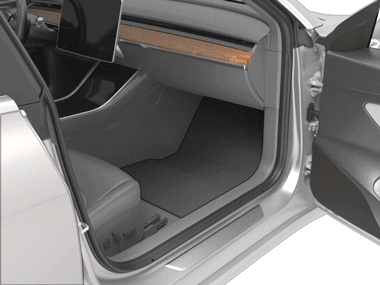Best Practices Guide to Understand What Maintenance a Tesla Needs


With the increasing adoption of electric vehicles (EVs), it has become essential for Tesla owners to know and understand the service and maintenance of Tesla cars.
Tesla vehicles do not require traditional oil changes, fuel filters, spark plug replacements, or emission checks like conventional gasoline vehicles. This significantly reduces the maintenance costs of Tesla vehicles.
The “regenerative braking” feature in electric vehicles returns the energy back to batteries, causing less wear and tear, fewer visits to service centers, and fewer maintenance costs. Keep reading to get to know more about what maintenance does a Tesla need and how to charge EVs effectively.
Recommended Routine Maintenance Service
Tesla recommends certain maintenance services for its vehicles based on different models.
- Cabin Air Filter
Every Tesla vehicle has an air filter that prevents pollen, road dust, industrial fallouts, and other particles from entering the air vents.
Tesla recommends the following replacement schedule for different models:

- HEPA Filter
High-Efficiency Particulate Air (HEPA) is equipped in Tesla Model S and Model X and inspired by hospital air filtration systems. It strips the outside air of pollen, pollution, and bacteria before it enters the vehicle.
The HEPA system scrubs the air inside of the cabin to eliminate such particles. It also has a Bioweapon Defense Mode that protects users from a military-grade bio attack just by sitting inside their cars.

For Tesla models equipped with HEPA filters, it is recommended that the filter should be replaced every 3 years (every year in China).
- Tire Rotation, Balance, and Wheel Alignment
It is recommended by Tesla that the vehicle’s tires should be rotated every 6,250 miles or if the tread difference is 2/32 or greater (whichever comes first). However, aggressive or reckless driving requires more frequent tire rotation. If the wheels are not balanced or aligned, they can affect the tire life and steering components.
- Brake Fluid Test
If the brake fluid level in the reservoir is low, the vehicle will give you a message on your dashboard saying “Brake Fluid Low”. This happens when your brake pads start wearing out and the brake fluid from the reservoir is transferred to the brake calipers. Such warnings usually come after 2-3 years when your brake fluid level is considerably low. Tesla recommends checking for brake fluid contamination every two years and replacing it if needed.
- Air Conditioning Service
Air conditioning service means that the A/C desiccant bag should be replaced for better efficiency and longer use. The following replacement schedule is recommended by Tesla for its different models:

- Winter Care
If you are driving your car in colder regions, Tesla recommends the lubrication of all your brake calipers every 12 months or after 12,500 miles.
How to Do Tesla Maintenance Yourself?
Over the last few years, Tesla has introduced several “Do It Yourself” guides to help Tesla users perform basic maintenance and set-up procedures without having to schedule an appointment. It is entirely upon the user’s discretion and comfort if they want to do the maintenance procedures themselves.
Tesla provides “Do It Yourself” guides for Model 3, Model S, and Model X. Most of these procedures are simple set-up, troubleshooting or maintenance. Some of these include:
- Restarting the Touchscreen: You can restart your touchscreen if it becomes unresponsive or demonstrates unusual behavior. The touch screen should be restarted only when the vehicle is in Park. You can restart by holding both of the scroll buttons on the steering wheel until the screen turns black. The screen will restart in 30 seconds.
- Power Cycling the Vehicle: You can power cycle the vehicle if it demonstrates unusual behavior or presents a nondescript alert. This should only be done when the car is in Park. You can go to the touch screen, touch Settings > Safety and Security > Power Off. Do not interact with the car for two minutes. After two minutes, wake the vehicle by pressing the brake pedal.
- Pairing a Bluetooth Phone: You can pair your Bluetooth phone with a Tesla vehicle to make and receive phone calls, access contact lists, and play media files. This simple process requires both your touchscreen and phone to be on. You just need to go to your touchscreen, select “Add a new device,” and then “Start Search.” Touch the phone you want to pair. Then, your touchscreen and phone will display a random number in a few seconds. Check that number on both devices and confirm.
- Connecting to WiFi: Tesla recommends that you connect to WiFi whenever possible to allow map and software updates. You can go to the cellular data icon (usually LTE or 4G) and select the WiFi you want to connect to. The vehicle will save the password and automatically connect to that network whenever it is in range.
- Programming Homelink: A vehicle-based wireless control system called Homelink allows you to automatically open and close garage doors, activate home security systems, etc. You can do so by touching the Homelink icon on the touchscreen. Touch “Create Homelink” and then select Standard, D-mode, or UR-mode. Enter your device name and then “Create HomeLink.” Follow the instructions on the touchscreen and then click “Save.”
- Replacing the Key Battery: Normally, the key battery lasts at least a year. If the battery is low, a message is displayed on the home screen. Replace the bottom cover and insert a new CR2032 battery to replace battery.

- Burnishing the Brakes: Brakes should be burnished after replacing brake pads and/or brake rotors. Burnishing brakes can also eliminate the squealing noise that might occur while using brakes. Go to the touch screen, touch Controls > Driving > Regenerative Braking > Low. Then drive at a speed of 80-90 km/hr on a straight road. Slowly decelerate the vehicle, releasing at 15 km/hr. Repeat this procedure 6 times with intervals of 30 seconds in between.
- Replacing Filters: Cabin air filters should be replaced every two years (every year in China) and the HEPA filters should be replaced every 3 years (every year in China).


- Checking and Adjusting Tire Pressures: If your vehicle has been stationary for over three days, check the target tire pressure on the Tire and Loading Information Label. Remove the valve cap and press a tire pressure gauge to measure the tire pressure. Add or release air depending on the recommended air pressure. Re-check the pressure and then reinstall the valve.
- Calibrate Cameras: The calibration process is complete after you have driven for 32-40 km (depending on the road and weather conditions), after which the autopilot features are available for use.
- Replacing Hood/Trunk Struts: The struts of your vehicle should be replaced if they fail for any reason. To replace hood/trunk struts, you must open the hood/trunk using a trim tool to release the clip on the top of the old struct. Lubricate the pivot points of the new struts and clean the mounting locations on the vehicle. Secure the new hood/trunk strut into its place.


Replacing Hood Struts
- Charge Port Status Light: The color of the light indicates the status of your charge port. The following table indicates the meaning of each color and provides corresponding instructions:

Tesla Maintenance Warranties
Tesla provides New Vehicle Limited Warranty, which incorporates Basic Vehicle Limited Warranty, Supplemental Restraint Limited Warranty, and Battery and Drive Unit Limited Warranty.
The Basic Limited Warranty covers the repair and replacement of certain parts (subject to exclusions) manufactured by Tesla under the normal use period of 4 years or 50,000 miles, whichever comes first. The Supplemental Restraint Limited Warranty covers the repair and replacement of the vehicle’s seat belts or airbags manufactured by Tesla under the normal use period of 5 years or 60,000 miles, whichever comes first. The Battery and Drive Unit Warranty covers the repair and replacement of any defective battery or drive unit.
Battery and Drive Unit Warranty for different models:

What Maintenance Does Tesla Need? The Bottom Line
Much information like the “Do it Yourself” guide is available on Tesla’s website. It is important to remember that you should only do these things if you feel comfortable and can follow all the instructions.
Also, the owner’s manual specifies the best ways to maintain your vehicle. If you have the New Vehicle Insurance Warranty provided by Tesla, you can easily avail of the maintenance and servicing at the Tesla service center. This is usually a good option since they provide long-term warranties.










